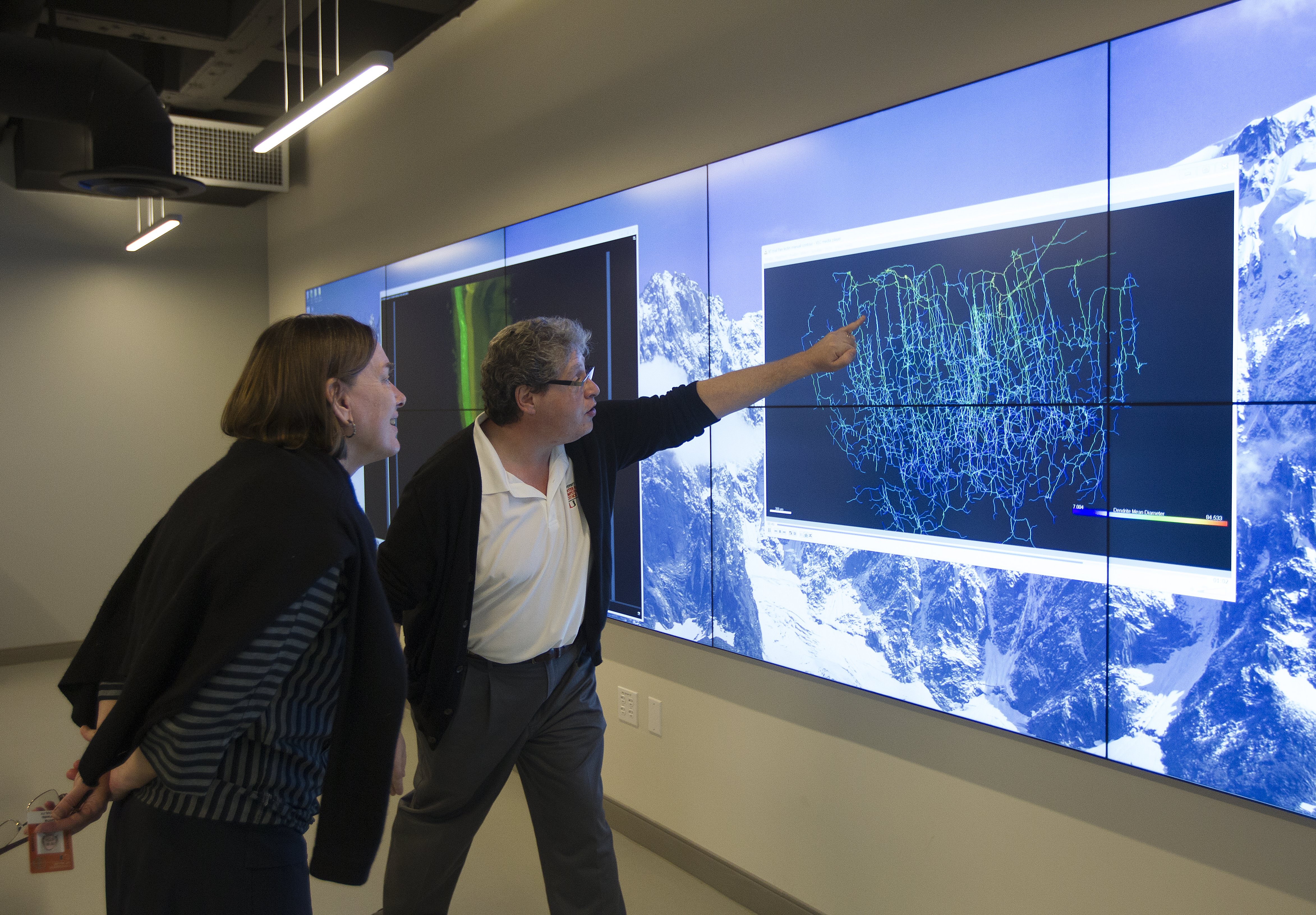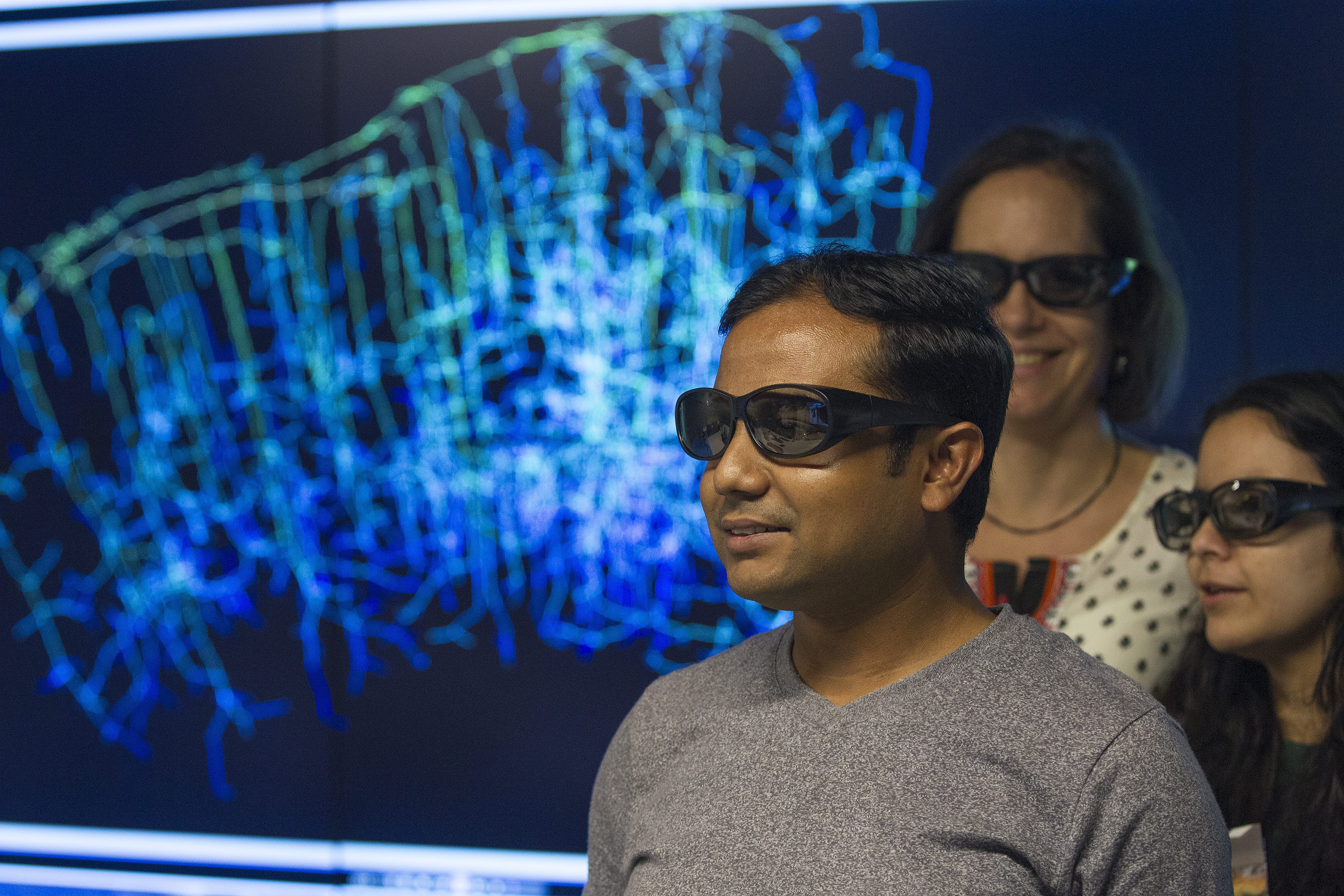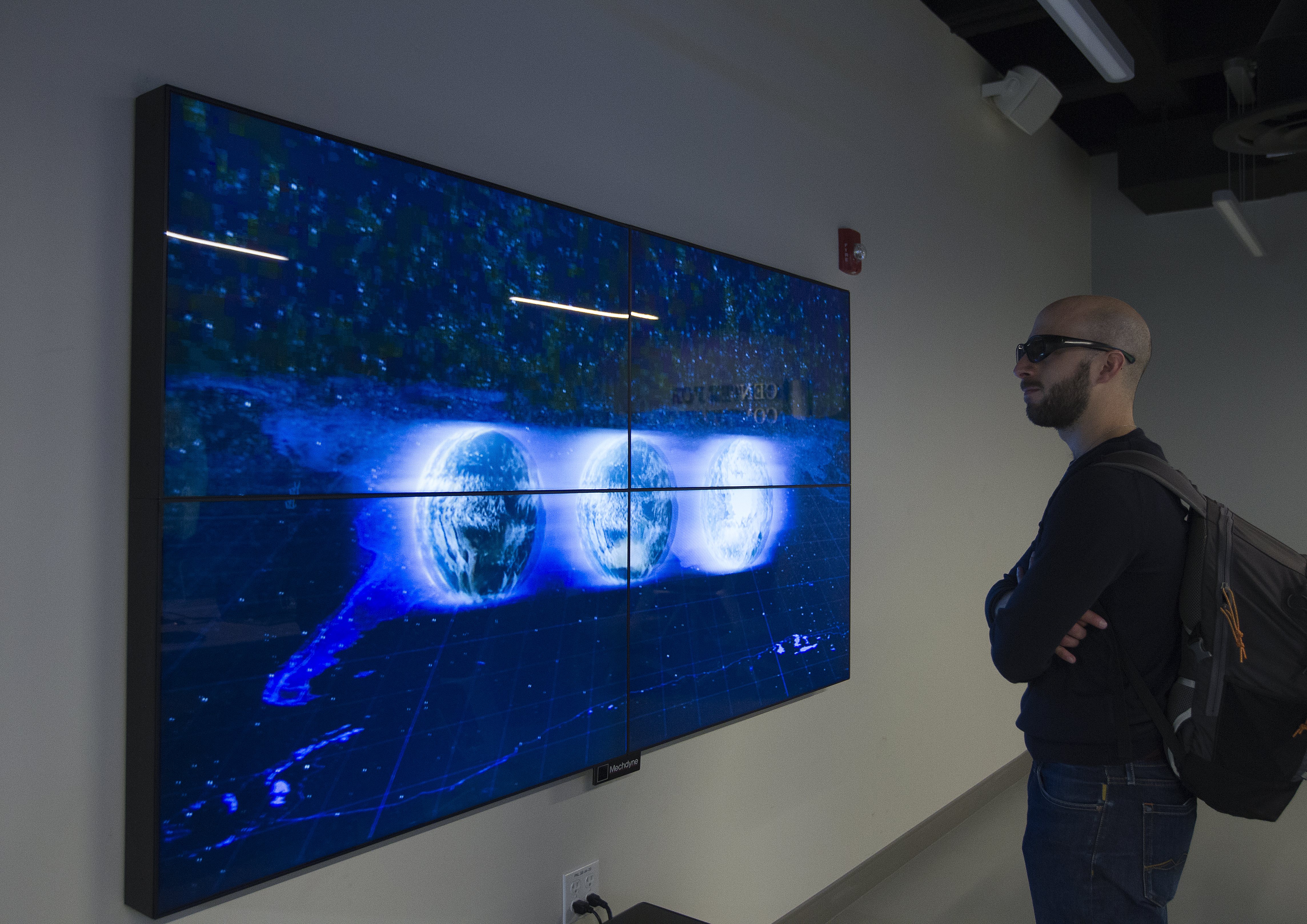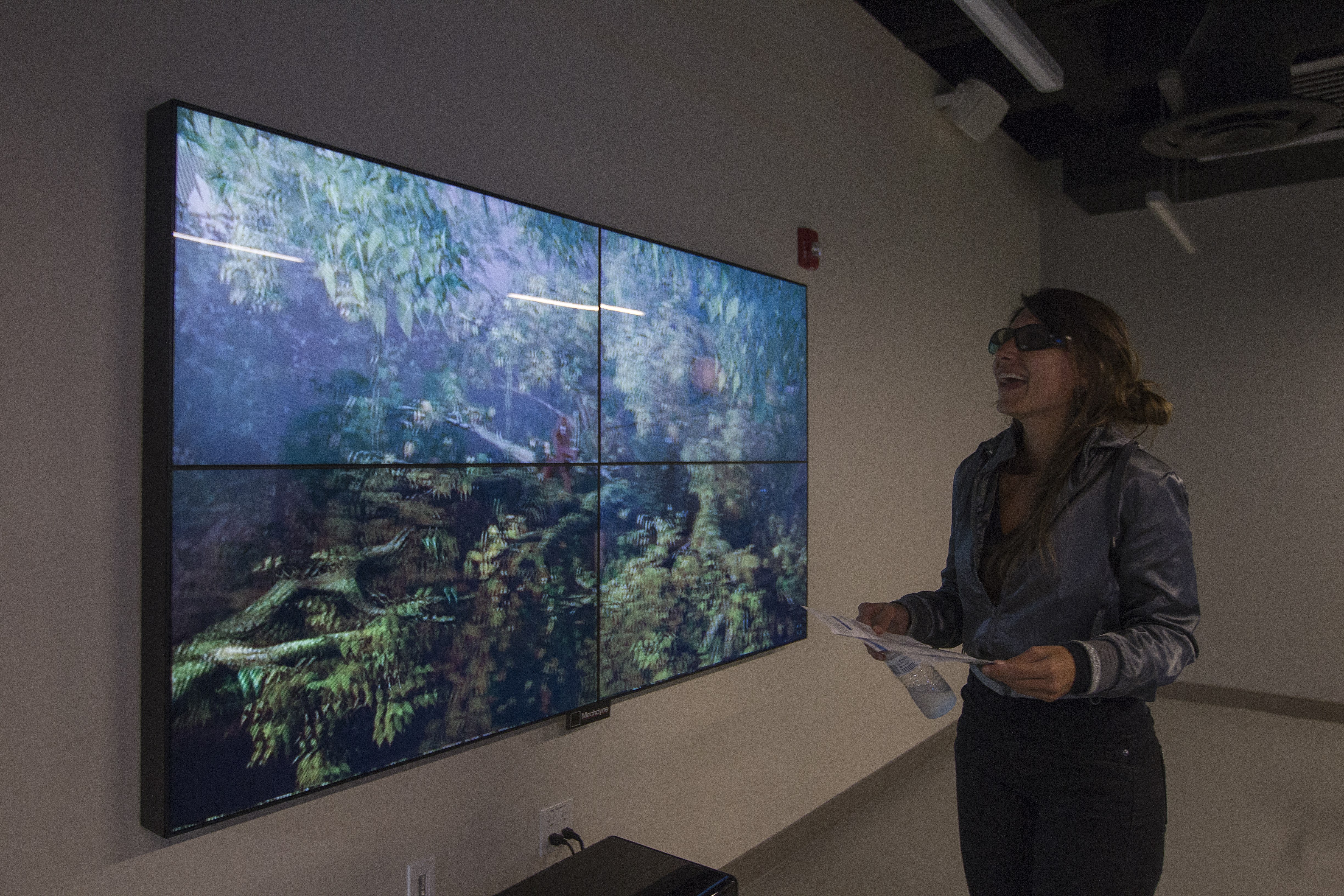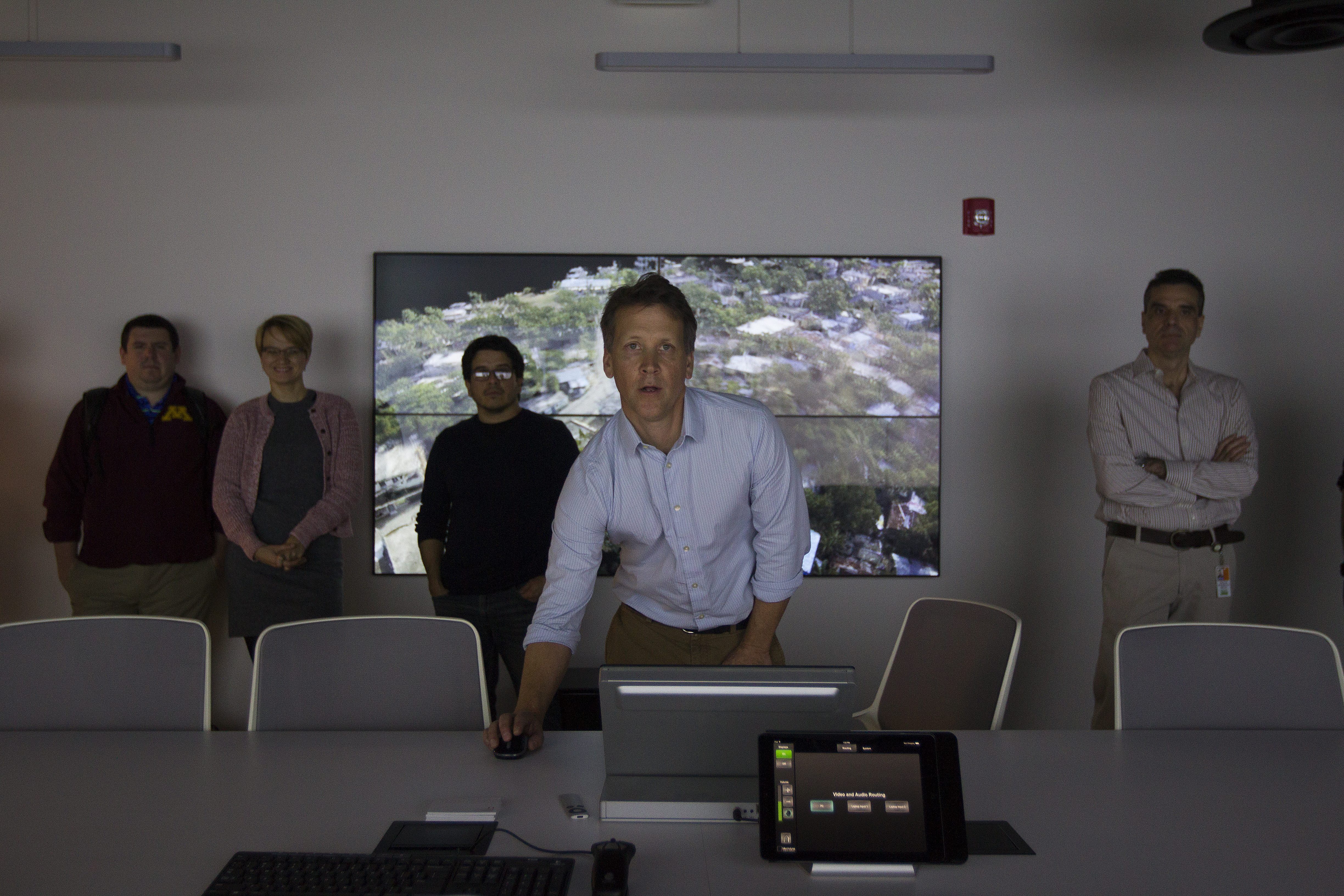By Robert C. Jones Jr.
UM News
CORAL GABLES, Fla. (January 20, 2016) – The aerial image of a Colombian shantytown appeared on the large display screen with such clarity that the 12 people gathered for the demonstration could identify the types and number of garments hanging from a clothesline on the rooftop of a shack.
“Just imagine what can be done with hurricane tracks and climatological data,” said Nick Tsinoremas, director of the University of Miami’s Center for Computational Science (CCS).
Tsinoremas was commending the visual and display capabilities of the 22-foot-long 2-D display monitor inside CCS’s new Visualization Lab. From a bird’s-eye view of a shantytown to an illustration of the branchlike projections of neurons called dendrites, the lab allows faculty members, researchers, scientists, and students to display high-resolution images, data, charts, and other information in visually stunning formats.
“This is a facility that will appeal to just about anyone on campus—architecture, business, the medical, and marine schools,” said Joel Zysman, director of high-performance computing for CCS. “Researchers can display their data like never before, but not only that, do something with that data such as perform live analysis.”
A tie-in with CCS’s Pegasus supercomputer makes that possible, allowing researchers to run simulations through the powerful device and then display their results on screen for analysis and discussion.
A plug-and-play system, the 2-D monitor is capable of displaying one large image or breaking up different components of data into as many as ten individual screens. A smaller 3-D monitor is also available, but content for that system must be specially created, and to experience the 3-D effect, special glasses must be worn.
Carie Penabad, associate professor in the School of Architecture, said she plans to use the Viz Lab at some point to present her ongoing research on shantytowns. With assistance from CCS, Penabad is using drones to map squatter settlements in Latin American countries such as Colombia and the Dominican Republic, using her charts to document and better understand areas not included on official local government maps yet are home to hundreds of thousands of people who live in horrid conditions.
“I can see all kinds of incredible projects that will be related to what our graduate students do,” said Gina Maranto, director of the undergraduate program in ecosystem science and policy, who gathered some of her students to attend a demo session of the lab, located on the third floor of the Ungar Building.
“They do a lot, especially the students who are working on things like vector-borne diseases,” explains Maranto. “We have three or four students who have been doing visualization and looking at land cover and trying to correlate mosquito and land cover and dengue or malaria outbreaks. Compared to working on a little screen or even a fairly large Apple screen—this stuff [the Visualization Lab] is just incredible.”
The CCS Viz Lab is a free resource for the UM community, but first-time use of the space requires an orientation session with a CCS support team. For more information on training sessions, email [email protected].






